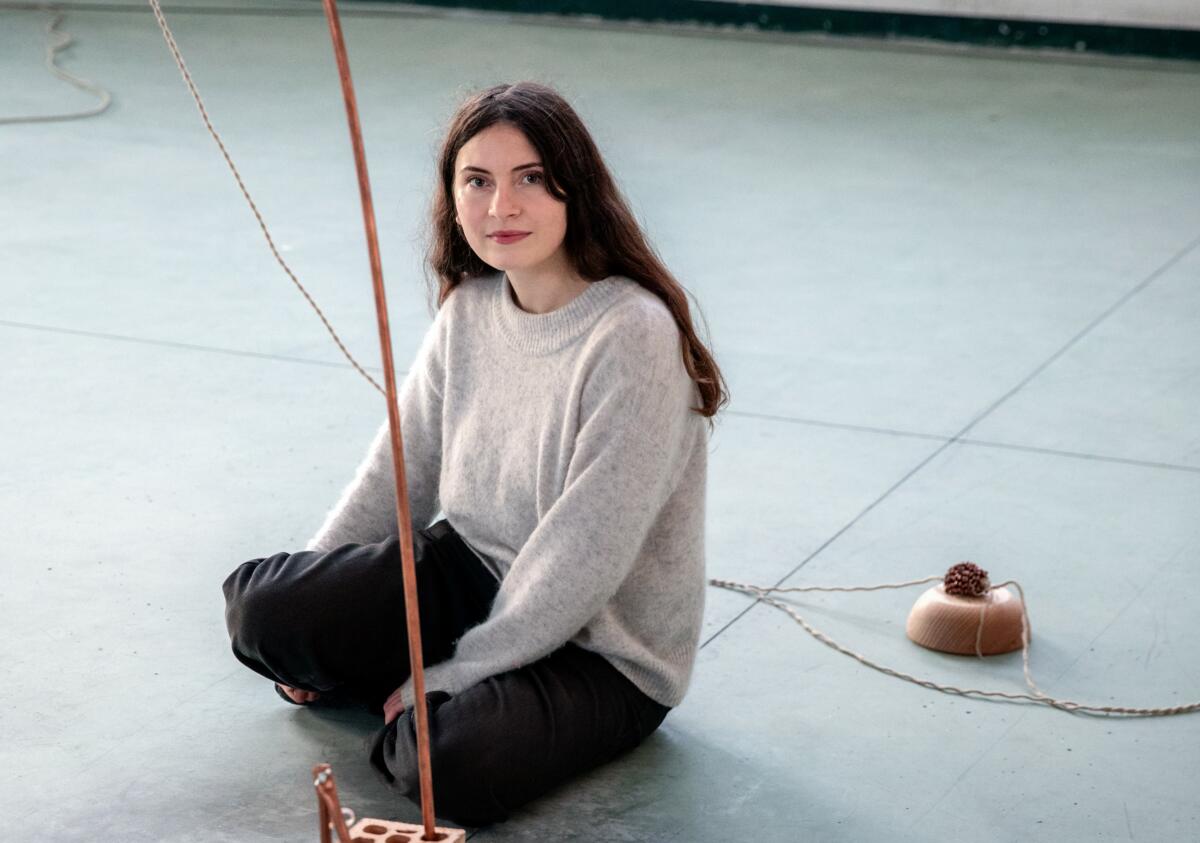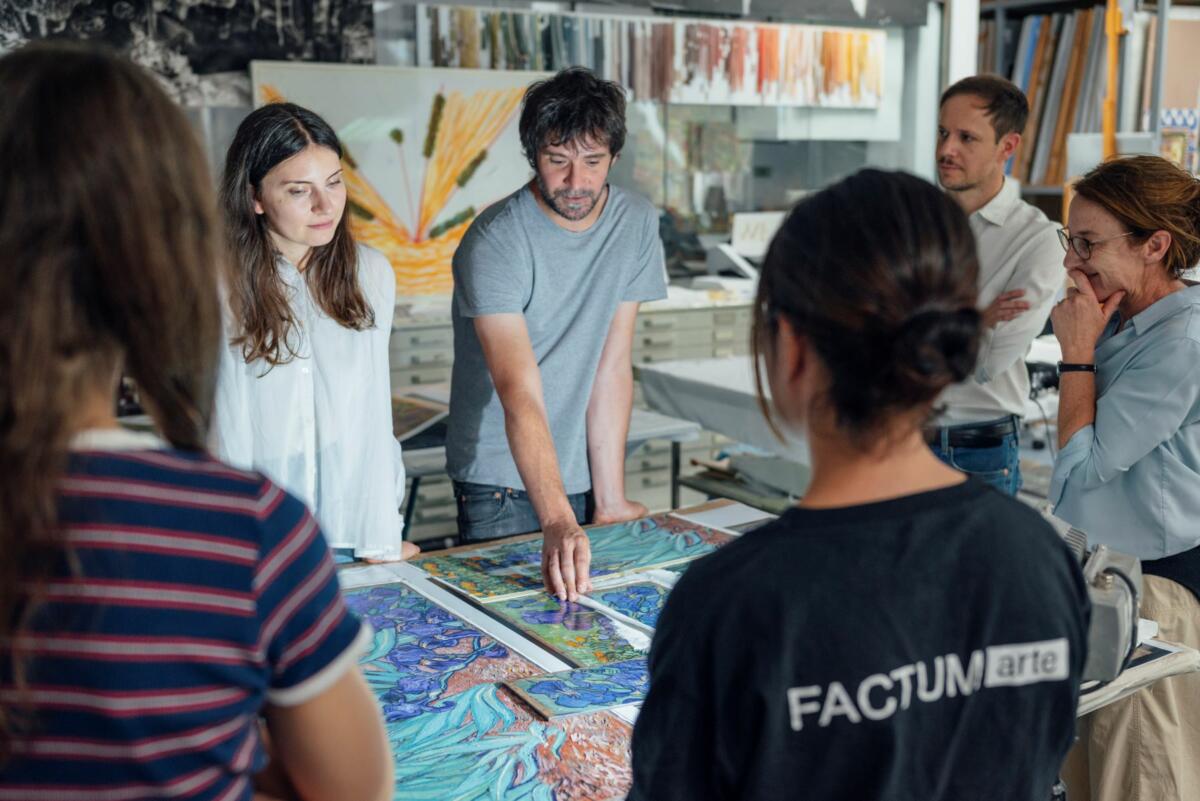Priss Niinikoski aims for an international career with her interdisciplinary methods
Priss Niinikoski highlights the immense importance of supporting artists in their internationalisation efforts when they are at the beginning of their careers.

Soon-to-be graduate from the Academy of Fine Arts Priss Niinikoski, 27, has just returned to Finland from her trip in Europe. In spring 2024, Niinikoski received The Johanna Ehrnrooth Prize – a new visual art prize – for internationalisation from the University of the Arts Helsinki Foundation, which gave her the opportunity to make several residency trips in France, Spain and Italy. During her travels, she met people representing international museums, foundations and art fairs as well as artists and researchers alike.
“It has been invaluable to be able to focus on artistic work one hundred percent. Last spring, I had a lot of interesting opportunities presented to me, but it wasn’t for sure that I could capitalise on them.”
Niinikoski has funded her artistic work with various freelance jobs, but when much of her time was tied up with preparations for the Kuvan Kevät MFA Exhibition, her financial situation became tough. Thankfully, the art prize from the University of the Arts Helsinki Foundation helped her seal her plans, and the artist was able to travel and visit numerous research centres, foundations, museums and galleries in Europe.
New technologies and insights from around the world
In her art, Niinikoski combines technology, sound and textiles. Last autumn, she spent two months in Treviso, Italy, working on her new work Automata. Situated in an old factory building, the installation artwork consists of 20 woven speakers and a six-channel sound installation. Niinikoski programmed a generative algorithm that analyses the sound data of the space and uses it to control synthetic sound, its speed and other functions.
Technology is, in fact, essential in her practice.
“I studied how crafted speakers could be executed in three dimensions. The shape of the speaker was inspired by the silkworm cocoon; during the trip, I learned about the history of silk production in the Treviso area. It was also great to be able to create a piece of sound art for a large, hall-like space.”
In the summer of 2024, the artist spent a month in Madrid with her student colleagues Kate Ruck and Petra Vehviläinen, learning about the activities of Factum Arte: a multi-disciplinary workshop dedicated to digital mediation in contemporary art and the production of facsimiles. Factum Arte works with renowned contemporary artists, such as Marina Abramović and Shezad Dawood.
Through its not-for-profit sister company, Factum Foundation for Digital Technology in Preservation, Factum also documents and rematerialises cultural heritage through digital means. Niinikoski got to observe how Vincent Van Gogh’s painting Irises (1889), which is part of the Getty Museum’s collection, was recreated to align with the research results of the museum’s conservator team. According to the findings, the iris flowers in the painting were originally purple instead of today’s blue hue. In the process, the original work was 3D-scanned, the jagged painting surface was 3D-printed based on the scan and the redefined colours were inkjet-printed on the recreated work’s surface. The result was an impressive reproduction that showcased the possible original colour scheme of the work.

The process sparked Niinikoski’s thought process about the connections between analogue and digital information. “I’m interested in the materialisation of objects from analogue to digital and vice versa. In my installations, I detach data from a physical gesture or event and transform it back into action that can be heard or seen. This creates interesting interaction, which allows us to access information that we would not otherwise sense.”
Interdisciplinary cooperation and contacts play a key role
In addition to sculpture studies, Niinikoski has studied programming and taken advantage of courses outside of her academy but within Uniarts Helsinki, including studies in music technology, sound art and lighting and sound design.
“My work is holistic, and I often find parallels with it in other fields. At the moment, I’m working with composer Olli Moilanen on an interdisciplinary installation and concert. It has been fun to see how textile art and composing are ultimately both about arranging things into a certain structure.”
Niinikoski is interested in collaborative work methods. “I’ve kind of stretched myself to the limit by doing a lot of my works alone. I have researched, learned a bunch of new skills, programmed, built electronics, woven by hand, prepared installations and applied for grants all at the same time. Hand making textiles, programming and building electronics is surprisingly time-consuming. It would be wonderful to work on projects with a bigger team and experts from different fields.”
Grants have special significance in the field of site-specific and research-based art, as sound installations do not find buyers in the same way as, for example, paintings do. International networking provides young artists with both job opportunities and partners from whom they can get help in the technical production of their works. “When it comes to networking, it’s important to just boldly approach people and organisations that interest you,” Niinikoski says.
Inspiring upcoming projects
Niinikoski’s work Sonic Mediations, which was on display in the MFA exhibition at the Academy of Fine Arts, will be exhibited at EMMA – Espoo Museum of Modern Art in late spring 2025. The work will be part of an exhibition titled Dialogues, which will present the Saastamoinen Foundation’s art collection and for which Niinikoski is now preparing a new performance piece.
The interactive sound installation that Niinikoski is working on with Moilanen will be exhibited at a literature festival called Runokuu. In the installation, the woven speakers and mechanical sculptures, introduced in previous works, react to the sound and movement created by poetry performances and a harp concert.
As for the autumn, Niinikoski will take part in a residency in Antwerp, Belgium, granted by the Finnish Cultural Foundation, where she intends to work with other sound artists. She previously studied fashion in Antwerp and now plans to network with the city’s art scene.
“Supporting the internationalisation efforts of artists at the beginning of their careers is extremely important. We have an interesting art scene in Finland with a lot of potential on the international market. My goal is to make my artistic work profitable, and for that I need international contacts.”
More information about Priss Niinikoski’s art is available on her website prissniinikoski.com and Instagram account @prissui.
Text: Stella Sironen